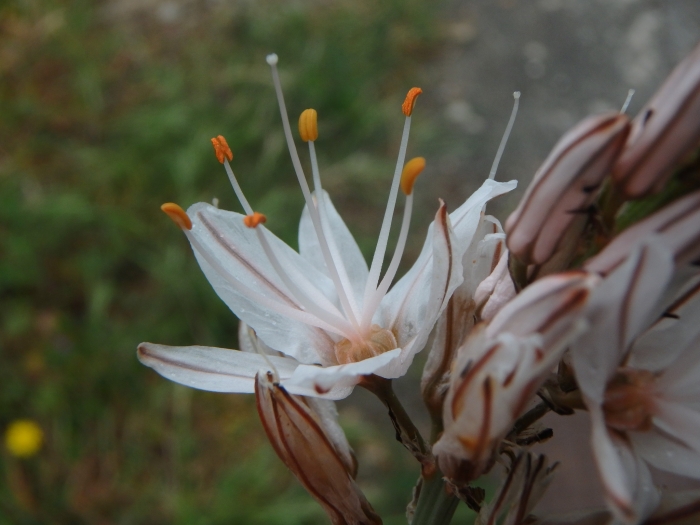Summer Asphodel
(Asphodelus aestivus)
Summer Asphodel (Asphodelus aestivus)
/
/

Daniel Cahen
CC BY 4.0
Image By:
Daniel Cahen
Recorded By:
Copyright:
CC BY 4.0
Copyright Notice:
Photo by: Daniel Cahen | License Type: CC BY 4.0 | License URL: http://creativecommons.org/licenses/by/4.0/ | Rights Holder: Daniel Cahen | Publisher: iNaturalist | Date Created: 2019-04-21T10:40:03-07:00 |























Estimated Native Range
Summary
Asphodelus aestivus, commonly known as Summer Asphodel, is an evergreen perennial herb native to the Mediterranean region, including the Iberian Peninsula, North Africa, and parts of the Middle East. It thrives in open grasslands, meadows, and rocky places, often on calcareous soils. This geophyte has an underground storage organ, allowing it to endure extreme conditions such as heat and drought. Summer Asphodel typically grows to a height of 30-60 cm, with a spread of 15-30 cm. It features linear, fleshy leaves and erect stems topped with racemes of star-shaped, pink and white flowers that bloom from June to September. The flowers are particularly showy and attract pollinators. In the Algarve, flowering may begin as early as late April.
Summer Asphodel is valued for its drought tolerance and striking floral display, making it suitable for rock gardens, wildflower meadows, and Mediterranean-style landscapes. It requires minimal maintenance once established. For optimal growth, it prefers full sun and well-drained, poor to moderately fertile soil. While it is generally disease-free, it can be harmful to grazing livestock when leaves are fresh. It is important to be cautious with this plant as it can become invasive outside its native range, particularly in similar Mediterranean climates.CC BY-SA 4.0
Summer Asphodel is valued for its drought tolerance and striking floral display, making it suitable for rock gardens, wildflower meadows, and Mediterranean-style landscapes. It requires minimal maintenance once established. For optimal growth, it prefers full sun and well-drained, poor to moderately fertile soil. While it is generally disease-free, it can be harmful to grazing livestock when leaves are fresh. It is important to be cautious with this plant as it can become invasive outside its native range, particularly in similar Mediterranean climates.CC BY-SA 4.0
Plant Description
- Plant Type: Herb
- Height: 3-4 feet
- Width: 0.75-1 feet
- Growth Rate: Moderate
- Flower Color: White, Pink
- Flowering Season: Spring
- Leaf Retention: Evergreen
Growth Requirements
- Sun: Full Sun
- Water: Low, Medium
- Drainage: Slow, Medium
Common Uses
Bank Stabilization, Bird Garden, Deer Resistant, Drought Tolerant, Hummingbird Garden, Low Maintenance, Rock Garden
Natural Habitat
Open grasslands, meadows, and rocky places, often on calcareous soils in the Mediterranean region, North Africa, and parts of the Middle East
Other Names
Common Names:
Scientific Names: , Asphodelus aestivus, Asphodelus microcarpus var. aestivus,
GBIF Accepted Name: Asphodelus aestivus Brot.